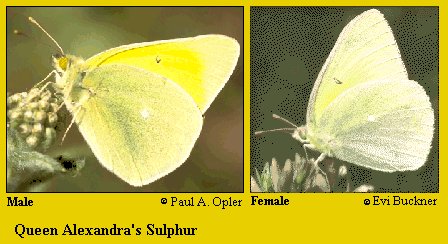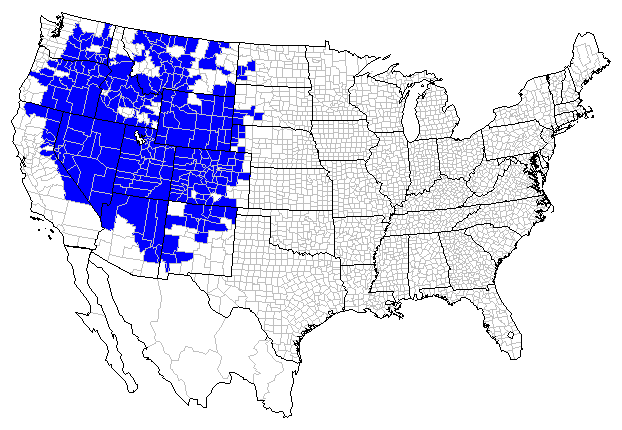 |
 

 |



Queen Alexandra's Sulphur (Colias alexandra W. H. Edwards)
Wing span: 1 5/8 - 2 1/4 inches (4.2 - 5.7 cm).
Identification: Upper surface of male bright yellow with pale yellow at wing bases; wings edged by narrow black border crossed by yellow veins; cell spot small. Female yellow, sometimes white, with forewing border faded or absent. Underside of hindwing of both sexes green-gray; cell spot white with no surrounding ring.
Life history: Males patrol open areas for females. Eggs are laid singly on top of host plant leaves, which the caterpillars eat. Late-stage caterpillars overwinter.
Flight: One flight from May-August.
Caterpillar hosts: Various plants in the pea family (Fabaceae) including milk vetch (Astragalus), Lupines (Lupinus), and clover (Trifolium) species.
Adult food: Nectar from flowers including blanket flower, milk vetches, and others.
Habitat: Road edges, fields, meadows, sagebrush flats.
Range: British Columbia south and east to eastern California, Arizona and New Mexico.
Conservation: Not usually required.
Management needs: Not reported.
The Nature Conservancy Global Rank: G5 - Demonstrably secure globally, though it may be quite rare in parts of its range, especially at the periphery.
References:
Scott, J. A. 1986. The butterflies of North America. Stanford University
Press, Stanford, Calif. 583 pages, 64 color plates.
Tilden, J. W. 1986. A field guide to western butterflies. Houghton-Mifflin
Co., Boston, Mass. 370 pages, 23 color plates.
Author: Jane M. Struttmann

